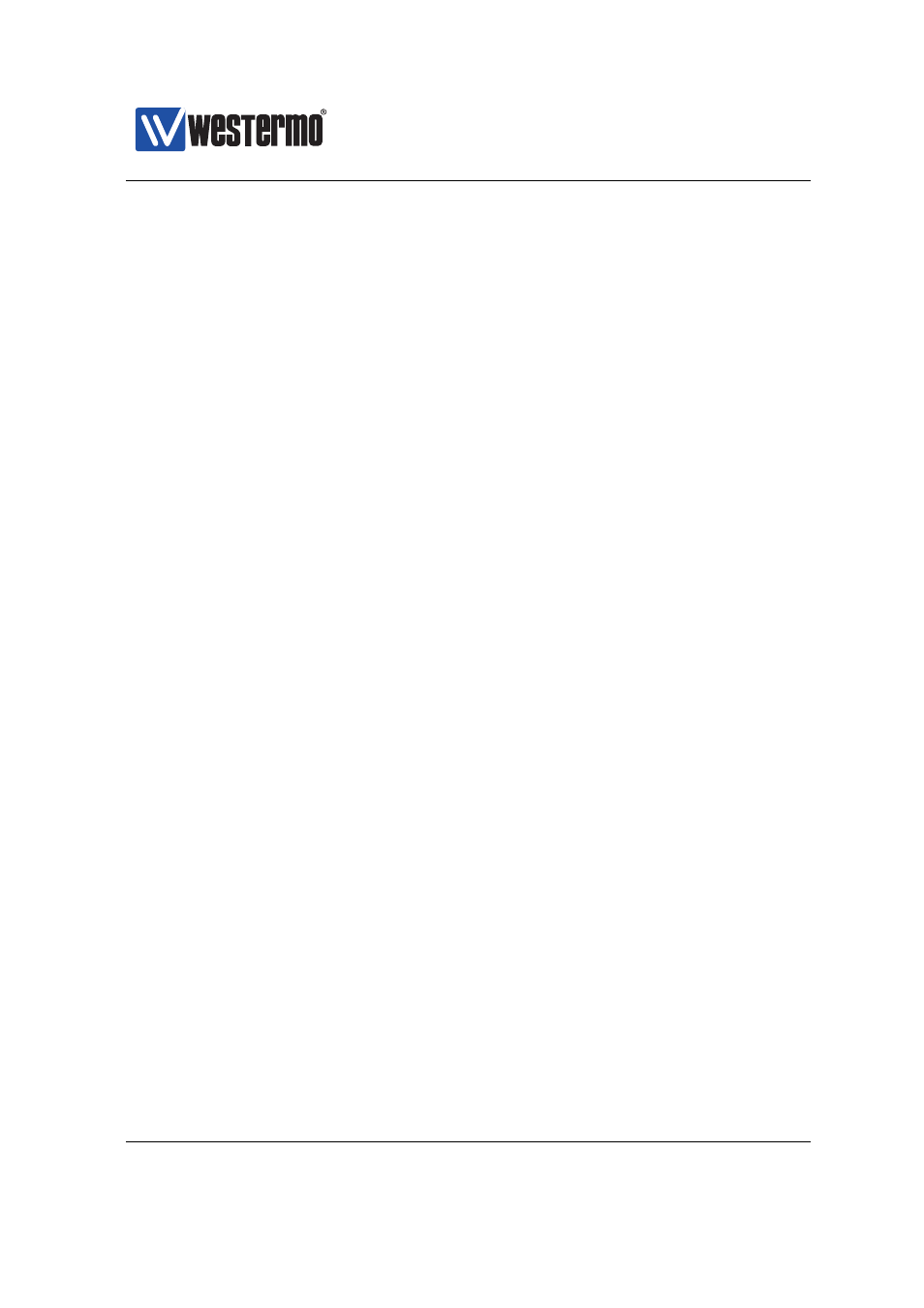Section 8.1.6 – Westermo RedFox Series User Manual
Page 170

Westermo OS Management Guide
Version 4.17.0-0
enabled, and that a trap host is configured. See
for more informa-
tion.
❼ Front panel LEDs: A link alarm may effect both the individual LED of the port,
as well as the common status LED for the switch (for definite information
about what functions affect the common status LED, see
– Individual LED: Each Ethernet port has a LED, which generally indicates
’green’ if the link is up. If there is no link, the LED will indicate ’yellow’
when link alarm is configured.
– Common status LED: The switch has a common status LED, labelled
’ON’ on the front panel. This LED will generally indicate ’green’ if all
associated functions are OK, and ’red’ if one or more of the associated
alarm sources are ’NOT OK’. E.g., if one of the ports configured with link
alarm indicates link down, the common status LED will be ’red’.
❼ Web interface: Link alarms (link down) are indicated on the main Web page,
and the port configuration/status page.
❼ CLI: A link alarm (link down) is indicated by an exclamation mark (’!’) when
displaying the port’s status in the CLI.
❼ Digital I/O: A link alarm can affect the output level of the digital I/O port in
the same way as it will affect the common status LED.
For more information on the functionality of the Digital I/O port, see
8.1.6
Inbound/Ingress rate limiting
The switch can be configured to limit the rate of a port’s incoming traffic - inbound
rate limiting (also referred to as ingress rate limiting). By default a port will accept
packets at a rate up to the link speed, but with inbound rate limiting activated
the switch will start dropping packets when data arrives above the given rate
threshold.
The inbound rate limiting feature can be useful as a complement to layer-2 pri-
ority handling (see
) when congestion within the network is to be
avoided.
There are two configuration settings for inbound rate limiting:
170
➞ 2015 Westermo Teleindustri AB
